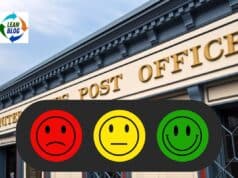The New York Times published an article today around the F.A.A.'s annual aviation forecast.
“In its annual aviation forecast, the F.A.A. projected sharply higher levels of non-airline flights in coming years because of the new planes, called “very light jets,” which will seat four to six passengers. The new planes can fly almost as fast as an airliner, and at even higher altitudes, but will land easily at fields with 3,000-foot runways, half the length of those at big airports. With a range of 1,000 miles or more, proponents say the new jets will spawn a new generation of air taxis and charters that will carry travelers to airports within 20 minutes of their homes or destinations, at a price comparable to a coach airline ticket.”
If this model is in fact adopted, there will be several benefits to travelers that fit nicely with at least 3 principles of the ‘Lean Consumption' model:
1. Don't waste the customer's time – passing through smaller airports to board jets that only seat 4-6 people will involve less queuing and waiting times for check-in and security processes as well as boarding and exiting the plane.
2. Provide value where the customer wants – the ability to use smaller airfields will allow these flight services to bring people closer to where they need to be upon landing.
3. Provide value when the customer wants – with less passengers required in order to reach the break-even passenger load factor for each flight, more frequent scheduling of flights will likely result.
Please scroll down (or click) to post a comment. Connect with me on LinkedIn.
Let’s build a culture of continuous improvement and psychological safety—together. If you're a leader aiming for lasting change (not just more projects), I help organizations:
- Engage people at all levels in sustainable improvement
- Shift from fear of mistakes to learning from them
- Apply Lean thinking in practical, people-centered ways
Interested in coaching or a keynote talk? Let’s talk.
Join me for a Lean Healthcare Accelerator Trip to Japan! Learn More










It’s very interesting. With the hub and spoke system, most airlines today charge you LESS money to fly MORE miles to a location that you don’t want to go, and they sell this as “efficiency.” Anything but lean. Some folks wonder why they’re in trouble. Notice, Southwest, which has largely direct flights to smaller airports, was the only airline not to lay-off after 9/11.
But who’s going to fly it? Are you going to fly on a plane with one pilot and no backup, and in-cockpit service? Just because I can build a small plane doesn’t make it automatically economical to fly.
These planes are still shy of a million bucks still in the price range of Doctors, Lawyers. I do not see these as becoming more popular just replacing current aviation technology.
Comments are closed.